The horror genre has long been a vehicle for social and moral commentary. The Atomic Age spawned many cautionary tales about the potential dangers of nuclear weapons, whether they be mutational anomalies or apocalyptic futures. It’s widely accepted that Jack Finney’s 1954 novel The Body Snatchers and its 1956 film adaptation are direct allegories to the 50’s Moral Panic and McCarthyism. Cautionary horror like The Fly evoked dangers of tinkering with Mother Nature. And John Carpenter’s They Live (1988) is a blatant critique of advertising, media, consumer culture, and mass mind control.
But while some directors have openly affirmed socio-political sub-texts to their films, postmodern deconstruction has often led to over-reach and nonsensical interpretative stretches. For example, Frankenstein is sometimes viewed through the lens of queer theory and transexuality, with the Monster representing “aspects of body dysmorphia.” Some describe The Exorcist as a commentary on xenophobia, enacting “the paranoia of a Western male-dominated society resisting changes that increasingly include the voices of those previously unheard: women, young people and members of our larger global world.” Others note that the alien Spores of The Body Snatchers can be viewed in the context of “queer themes” (the pod people are “the other,” they cannot biologically procreate but can still replicate.) The Texas Chainsaw Massacre was viewed as a metaphor for Nixon-era mayhem as well as Hicksploitation. While other critics interpreted David Cronenberg’s body horror movie The Fly (1986) to be about the AIDS crisis. And Bram Stoker’s Dracula has been charged with everything from misogyny, to racism, to homophobia, as well as “ecophobia” or “fear of the unknown in nature” (via “gothic ecocriticism”).
In the 21st century, this interpretive overreach has witnessed a sharp Left turn.
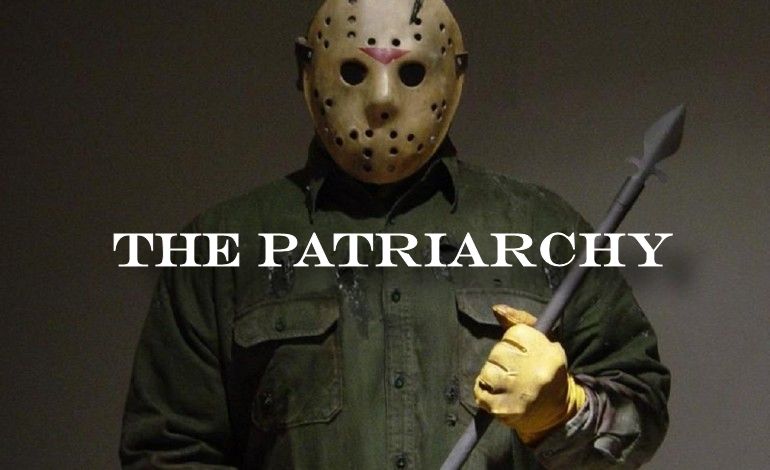
Perhaps one of the best evidences of this is personified by the word “woke.” Not only have standard dictionaries added the word to their catalog, entire industries and genres are now designated by it — woke films, woke fiction, woke comics, woke churches, woke music, woke brands, etc., etc. Dictionary.com defines “woke” as “having or marked by an active awareness of systemic injustices and prejudices, especially those related to civil and human rights. “To be “woke” is to be (and remain) vigilantly aware of systemic biases, power inequity, and obstacles facing marginalized communities. Identitarianism plays an integral part in woke dogma, as individuals are often parsed by ethnicity, gender, class, and sexual preference. Today’s woke culture has combined postmodern academic aesthetics with countercultural militancy, sifting all cultural commodities through the sieve of intersectional theory, identity politics, antiracism, and diversity.
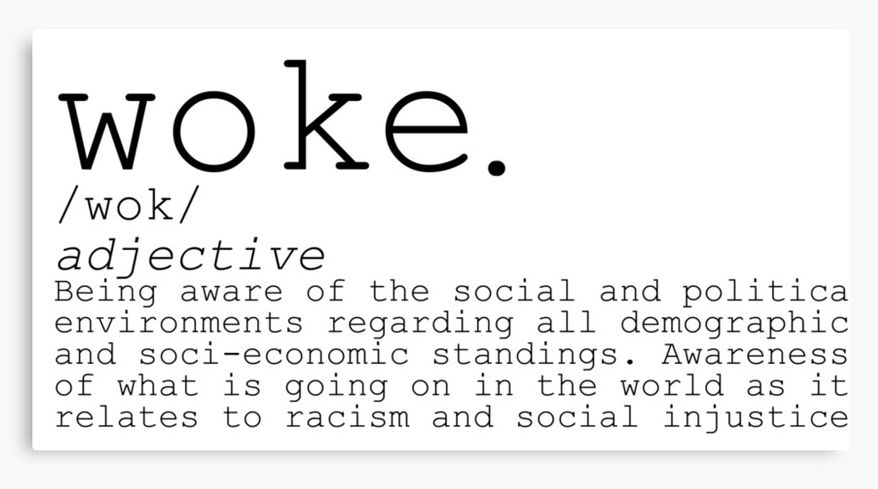
The horror genre is just one of many pop cultural commodities now being scrutinized and co-opted by a new breed of social justice activist. As such, an emerging category of “woke horror” has sloughed into the light. Lists of “woke horror” films are now appearing, as well as the filmmakers who make them. For example, IMBd has compiled 47 “Woke Horror” films. There’s also a list of filmmakers leading the rise of woke horror. Ranker has grouped The Most Woke Movies of All Time, with quite a few horror films included in the mix.
The horror genre is just one of many pop cultural commodities now being scrutinized and co-opted by a new breed of social justice activist.
So what distinguishes “woke horror” from, um, normal horror? Basically, overt social justice messaging. “Woke horror” addresses “systemic injustices and prejudices.” Racism, white privilege, and white supremacy are thematic constants, as is sexism, feminism, toxic masculinity, and the Patriarchy. Revenge (often feminist revenge) is a common trope in “woke horror,” typically juxtaposed against some power imbalance (personified via bullies, jocks, abusive husbands, or corporate execs). Diversity is also a huge element of “woke horror,” casting people of color, bi-racial couples, and LGBTQ representatives in rather predicatable order. (This has even spawned sub-genres of Gay Horror and Queer Horror.) Inclusion of marginalized groups is common, especially migrants and religious / ideological minorities (such as pagans, witches, and occultists). And with climate change now viewed as a social justice issue (see: climate justice), capitalism and the environment are also addressed, with Anarchy and Nature exerting appropriate revenge.
Addressing such contemporary issues and themes should be well within the purview of art. However, the problem with “woke horror” is that social justice messaging is subsuming good storytelling and its proponents are “cancelling” art and artists that do not share their political sympathies.
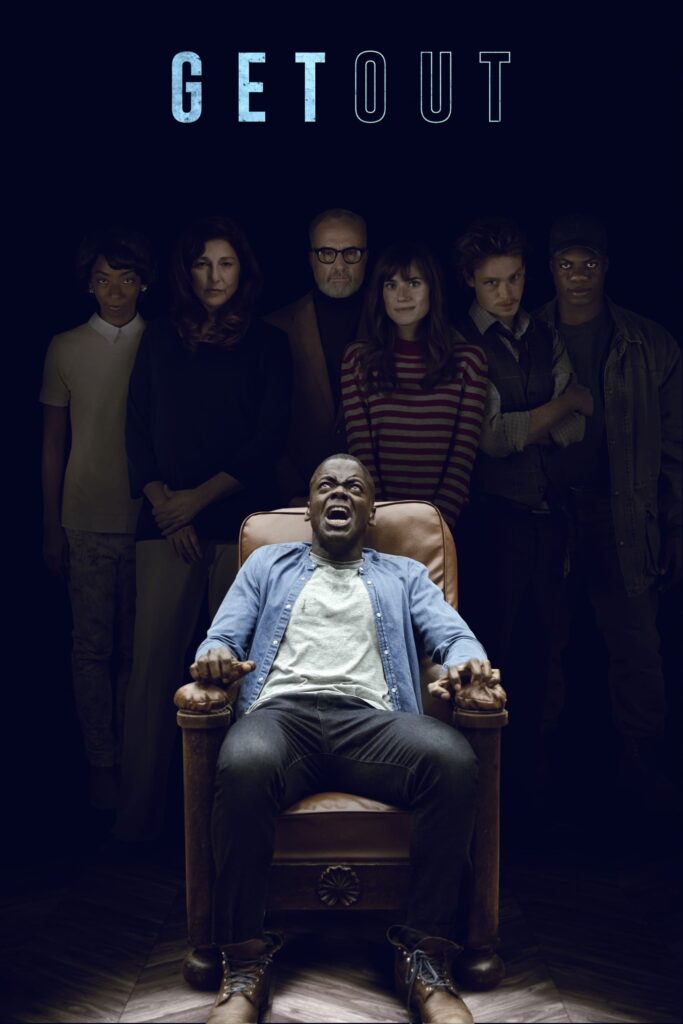
For example, the film most often ranked as a prime example of “woke horror” is Jordan Peele’s Get Out. Some have described it as The Little Movie With A Big Message. What is that “big message”? Well, a writer at Vox suggests that the film “deconstructs racism for white people.”
Get Out ingeniously uses common horror tropes to reveal truths about how pernicious racism is in the world. It doesn’t walk back any of its condemnations by inserting a “white savior” or making overtures to pacifism and tolerance. No: In this film, white society is a conscious purveyor of evil, and [the protag] must remain alert to its benevolent racism. He has to in order to survive.
In keeping with postmodern literary deconstruction, the author distills the film’s message into essential antiracist bullet points:
- Get Out frames violent black resistance as a necessity born of desperation
- White feminism is portrayed as a bluff
- White microaggressions are framed as masking real dehumanization
- Code switching is portrayed as a tool to make white people more comfortable
A pretty lofty achievement for a horror film, huh?
Of course, others saw the film as a heavy-handed, race-baiting, tract. Like this reviewer at IMBd:
Peele does a great disservice to true victims of racism by reducing the tormentors to a group of straw men and women who are easily set aside. In real life, of course, racism is a far more complicated affair and sometimes the victims turn out to be as bad as their oppressors.
Get Out marks a new low in race relations with Peele setting a poor example for impressionable youth. Instead of trying to mend fences, Peele is content to present African-Americans as perennial victims at the hands of stereotyped white tormentors. No race or ethnic group has a monopoly on benevolence despite Peele’s lame and misguided outlook to the contrary.
Nevertheless, the film was almost-universally hailed as one of best movies of the year.
Similarly, Guillermo de Toro’s The Shape of Water, a weird horror / urban fantasy period piece was awarded Best Picture of Year. Despite the accolades, the film’s social justice messaging prompted critiques of its heavy-handed approach. The film checks off all the appropriate “woke” identity boxes:
- Handicapped (mute) female lead character
- Black female protagonist
- Lonely gay man
- Imprisoned, tortured, sympathetic human-like “monster”
- Repressed, white, racist, Christian, male as villain
The film is at once a stunning achievement in production design and an indentitarian’s wet dream. As one author points out in The problem with ‘The Shape of Water’ and other ‘woke’ films is that the movie’s messaging is about as subtle as a sledgehammer to the solar plexus.
The problem with the trend of woke cinema is the way in which they so proudly broadcast their very wokeness. Once-disreputable genres are scrubbed of their shagginess, subtlety and nuance, and injected with the thematic pretension and bloat that sinks the worst “serious dramas.” Irrespective of their ostensible merits, or demerits, films like Get Out, the cross-cultural romance The Big Sick and The Shape of Water seem to exist in part simply to be liked. Conspicuously enjoying them, and announcing that enjoyment, expressed not only a given viewer’s taste, but their whole worldview.
Many “woke horror” entries now exist simply to “broadcast” one’s social justice bonafides.
One writer at The Grimoire of Horror, in his review of “Wrong Turn” (2021), openly pines for the the End of Woke Horror. Why? Because any semblance of story in the film has been swapped for formulaic social justice messaging. For example, he describes the characters as ” little more than a checklist of political correctness.”
Darius (Adain Bradley) is an African American whose work in the nonprofit sector he hopes to translate into a better world where people follow through on Dr. Martin Luther King’s dream. His white girlfriend (Charlotte Vega) has two doctorates. His friends Adam (Dylan McTee) and Milla (Emma Dumont) are an app developer and an oncologist, respectively, and there’s a gay, biracial couple in tow.
Conveniently, the convoluted backstory traces the hillbilly mutants to, you guessed it, white Southern Confederates.
Jamie Lee Curtis was not shy about attaching the most recent Halloween entries with the #MeToo movement. In summing up the final entry into the series’ film canon, she frames it as feminist revenge porn. Curtis says, “any woman who fights back is a survivor and a champion, and we have a world right now where women are finally saying enough is enough, time’s up, #MeToo.” In fact, the #MeToo movement has prompted a wave of female revenge flicks, providing ideal inclusion into the “woke horror” brand. Like the latest iteration of The Invisible Man. Writers at Vogue magazine declared that With The Invisible Man, Horror Is Starting to Get #MeToo Right. Over at Slate, one author surmises that the #MeToo era of film is producing Monster Girls. “Monster girls flip the script on social anxiety and show us girls that can walk confidently through the world, unafraid of empty night streets or slow-driving cars.” Apparently, it was “the era of Trump” that spawned these bad-ass Monster Girls. This idea of girls “flipping the script” led to what one writer called #MeToo’s first horror film, 2018’s Revenge. The film is described as an exploitation movie for the #MeToo era. Ironically, “exploitation” is the exact thing #MeToo aims to correct.
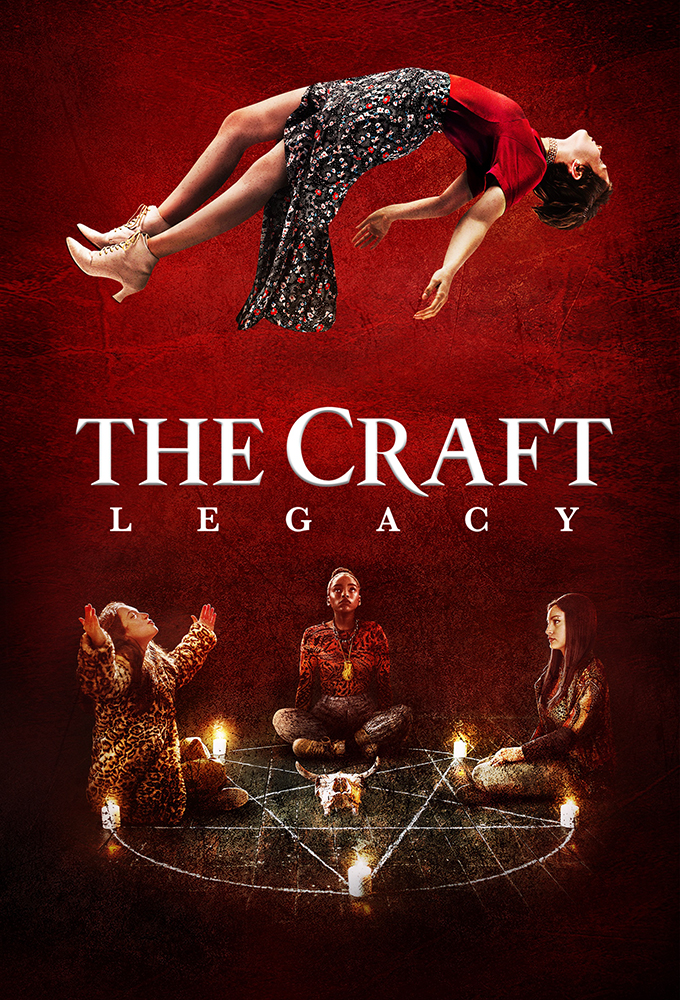
#MeToo and the female empowerment narrative dovetail with another horror trope — witchcraft.
The Craft: Legacy, sequel to the 1996 teen horror, is described as centering “woke witchcraft” while “highlighting the importance of embracing intersectional female power while being aware of the dangers of toxic masculinity.” Of course, witchcraft has often been used as a vehicle to represent female awakening or empowerment, whether sexual, social, or political. But in The Craft: Legacy, magic is simply a tool for social justice. In this case, it is to upend oppression. Perhaps the most effective of all the spells in the film is one which transforms a knuckle-dragging bully onto “an ultra-woke defender of social justice,” from a “mean jock” to a “vulnerable empath.” What better revenge than using feminist “magic” to convert the un-woke into Social Justice Warriors?
As columnist Ross Douthat put it, “witches are the new woke heroines.” He quotes from a recent New York Times story promoting the reboot of the TV witch drama Charmed, claimed that the witches of Charmed are “out to slay demons. And the Patriarchy.” Netflix’s Chilling Adventures of Sabrina is notably more serious about its occult content than the earlier series upon which it was based. The actress who plays Sabrina admits “She’s a woke witch.” In Sabrina the Teenage Witch’s New Power Is Being a Woke Feminist the writer at Jezebel explains,
the show is actively trying to be more progressive and inclusive of different gender identities and sexualities. (Sabrina’s cousin, played by Chance Perdomo, was billed as pansexual at the time of casting.) Shipka’s co-star Lachlan Watson also referred to the show’s intersectional feminism, as demonstrated by their character Susie, who is non-binary…
Indeed, LGBTQ representation is another major plank of Woke Horror. For instance, Rotten Tomatoes aggregates 30 Essential LGBTQ+ Horror Movies. Why exactly The Haunting (1963), Let the Right One In (2008), and Hellraiser (1987) are included is not entirely clear. Likewise, the folks at Out magazine compile a list of 13 Queer Horror Films & Shows to Stream This Halloween Season. Apparently, they consider the Halloween holiday as the “official Gay Christmas.” They note such films as Jennifer’s Body, which is described this way: “[Megan] Fox plays a teen girl who gets possessed by a demon, makes out with her female best friend, and starts killing boys.” And then there’s the new Chucky series on SyFy. Apparently, Chucky Is Back & Queerer Than Ever Thanks to His Gay Creator, the main character being “a queer teen boy named Jake. “
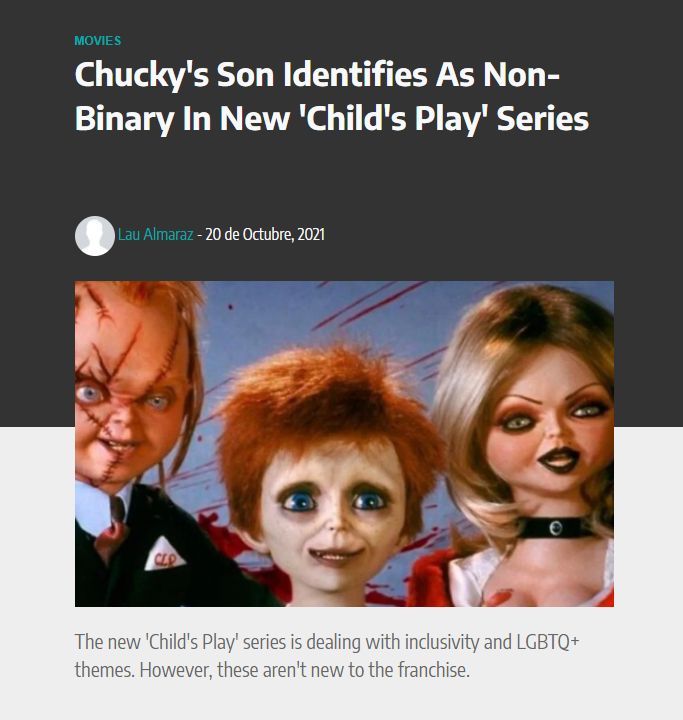
Social commentary and contemporary themes should be fair game for creatives. Furthermore, pursuing ethnic and gender diversity in film and fiction can be noble pursuits. The problem is when ideologies and ideologues subvert free expression and co-opt artistic mediums for purposes of indoctrination, virtue signaling, and political messaging.
This author notes how The Purge franchise has been hijacked by such ideologues. In Let ‘woke’ horror movies die: ‘The Forever Purge’ begs for liberal praise by devolving into anti-Trump fanfiction for CNN viewers, he writes
The ‘Purge’ franchise began as an interesting examination of morals, but it has quickly turned into the latest example of wokeism destroying art and turning creators into part-time, ill-informed political pundits.
Sadly, many fans and critics have become gatekeepers of this emerging political correctness.
For example, one critic slammed A Quiet Place as “socially regressive.” Why? Because
“its central narrative [was] about a white family with guns protecting their home from ‘a bunch of big, dark, stealthy, predatory creatures.'”
Because everyone knows that white families with guns protecting themselves from monsters can only imply one thing — racism.
The “woke horror” aficionado sees everything through the lens of race and identitarianism.
Like, this pastor who sees the iconic celluloid serial killers from Halloween and Friday the 13th as analogous of the Patriarchy, their weapons just “phallic” symbols.
“A socially stunted man wields a phallic weapon to kill the teens who are into sex, drugs, and rock-n-roll… The Michael Myers and Jason Voorhees of cinema, demented though they may be, uphold patriarchal values.”
The “woke horror” aficionado sees everything through the lens of race and identitarianism.
Another woke critic finds racist overtones in the final scene from John Carpenter’s The Thing:
as the camera frames the survivors in medium close reverse shots of mutual suspicion, one can discern that the breath of the white man is heavily fogged in the Antarctic air, whereas the black man’s is not. The implication is subtle but clear. The Thing lives on and, interestingly enough, its carrier is yet another socially marginalized form, the black male.
But such overreach and interpretive abstraction appears common to the woke critic.
More recently, critics of the latest Ghostbusters incarnation, Afterlife, take it to task for ignoring the all-female reboot. One of the female stars of the 2016 box office failure sees Afterlife’s rebuff as an extension of the misogyny and racism that the film allegedly evoked. Of course, it couldn’t have been that the all-female remake was a poorly executed, feminist-messaging, bore.
But when one sees everything through the lens of racism and misogyny, racism and misogyny will be found everywhere.
The horror genre has always provided social critique and commentary. This won’t and shouldn’t stop. However, a new type of militancy has now tainted our dialog, polarizing parties and subsuming our art. Sure, this “threat” can be exaggerated. But if the horror genre is any indication, the “woke monster” is a very real danger. Not only does this ideology threaten to hijack our art for the purpose of social justice propaganda, but it turns us into nit-pickers and auditors, pitting fans and creatives against one another in a fascistic deathmatch. But just like any good horror protagonist, facing the monster is unavoidable.

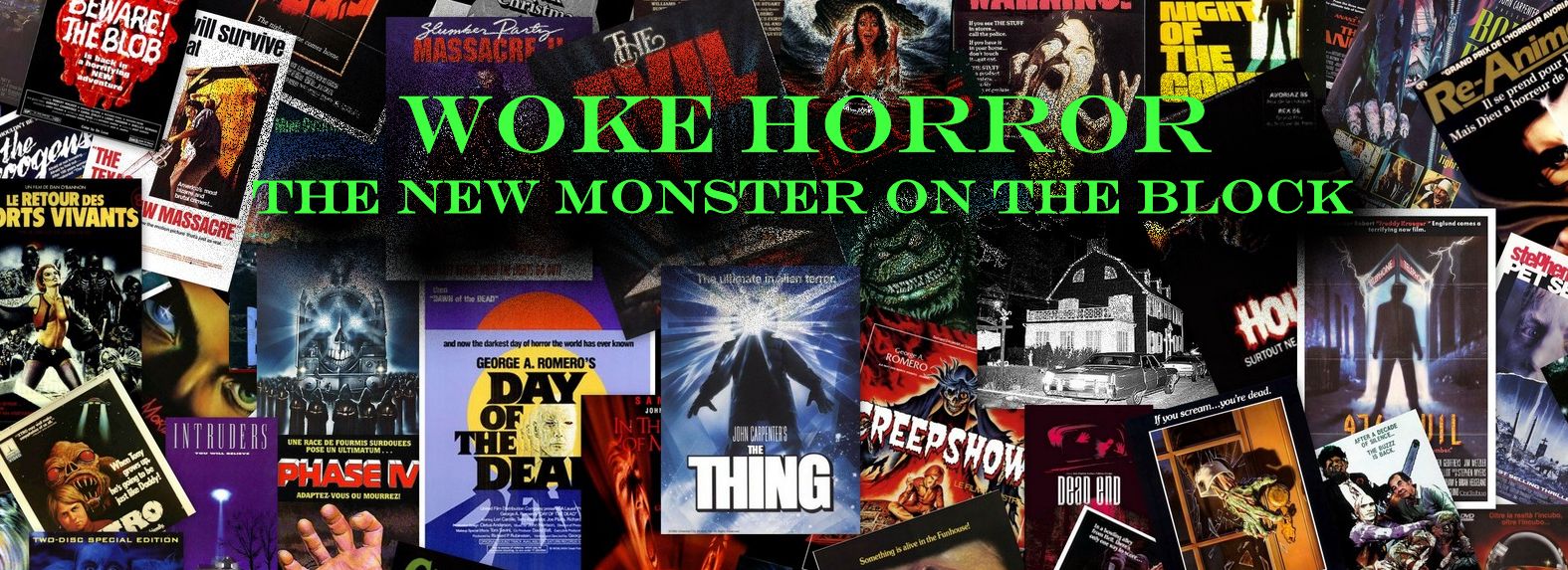














Those sneaky dictionary maneuvers and “updates” are why I bought a large 1985-published Webster’s Unabridged. You can’t change paper and ink!
Awesome article, well planned and well written. Thank you for revealing a world of thought I was not aware of. Perhaps it is the social pendulum swinging to far in one direction, or maybe it will be a force for change and the end of watching media for the sake of enjoyment?
I need you to read something as I think it is pretty important as someone pretty far left reading this…
https://www.mikeduran.com/2010/03/12/lets-stop-being-so-easily-offended/
That blog post your wrote 12 years ago. You are just doing the same thing all Christians always do and they always try to spin it like an attack on them personally.
I want you to take a step back and think logically. Dave Chapelle just got another Netflix comedy special. This is his 4th one. They still haven’t had a gay male comedian or a trans woman. Dave Chapelle did not get canceled.
Criticizing something isn’t really the same thing as censoring it or burning it or banning it.
You have a lot of double speak in here.
Especially this part:
“ Social commentary and contemporary themes should be fair game for creatives. Furthermore, pursuing ethnic and gender diversity in film and fiction can be noble pursuits. The problem is when ideologies and ideologues subvert free expression and co-opt artistic mediums for purposes of indoctrination, virtue signaling, and political messaging.”
This is apart of free speech.
I do understand what you’re saying when you talk about “the checklist”. But some movies managed to do that checklist without feeling like a checklist when you’re watching like “Get Out” and some movies feel like a checklist like remake of “The Craft”. The original “The Craft” also has racial justice and small amounts of queer themes in it but it never feels like it’s preaching to me, the new one did. And I say that as a lefty. This was actually something that a lot of people complained about too! Especially queer people who the movie is clearly for.
And I also know what you mean that there are lefties who are just constantly offended at everything. But I want to point you back to your 2010 post and remind you that this is just human beings expressing their feelings much like you are now expressing offense and projecting.
“ the “woke monster” is a very real danger. Not only does this ideology threaten to hijack our art for the purpose of social justice propaganda, but it turns us into nit-pickers and auditors, pitting fans and creatives against one another in a fascistic deathmatch. But just like any good horror protagonist, facing the monster is unavoidable.”
Seriously I’m not really sure how else I am supposed to interpret this other than a call for censorship (and possibly murdering leftists) for the things that you don’t like in film.
Like you are a fan who is pitting themselves against movies that just nitpicked to heck and never once really asked yourself why?
You know maybe racism and misogyny actually are everywhere. Do you ever think of that? and now that you are seeing movies made by women and Black people and gay people you noticed politics that do not match your own.
Ghostbusters is a republican sort of movie. It is absolutely a deregulation dream. They literally fight the EPA! There is loads of politics in it. You just aren’t noticing because it conforms with you more. And yeah, I actually agree with you the 2016 movie was completely boring and not because it was all women but because they didn’t let that cast do what they should have been able to do. and I actually think sexism is ironically part of the reason why they weren’t allowed to be as funny as I know all of those actresses could be.
I really do think the deregulation around media corporations has been a huge disservice to everyone in the United States. The lack of monopoly busting has made everything big come out like paste. And the lack of film competition just ensures that these sorts of movies will keep getting made and keep making lots of money. Films used to not do these big premiers in nearly every theater in the country every single time. Most of the time it took more than a month to hit a peak date for seeing the film. But now most of the time films are over and done with within two weeks really. That FOMO is really making it hard for lower budget movies to compete.
And in a big way the great movies that flopped are no longer being put out in theaters the more experimental movies are making it straight to streaming services. So people just don’t venerate things that weren’t in theaters…or were only in the film festival circuit .
Maybe you could notice some things that I’ve noticed. I mean I’m trying to talk to you like maybe we might have some common ground… have you ever noticed how there’s less disabled actors being employed now than there’s ever been? Specifically whenever they replace disabled actors with CGI or camera tricks. And the lack of needing little people to perform those roles or to operate puppets has been terrible. Hollywood is not “woke”. Hollywood is just making films with as many different groups included as possible so that way they come to the movies. Cause those movies make more money. Everything is much like music it is it’s not just a rock song… it must be everything to everybody. It has a customer is always right mentality. And sometimes that does come out super homogenous and sloppy. Cause you can’t please everyone.
Not even that long ago they were talking about how only 20% of big films have more than one woman behind the camera working in a major position. Only 5% of cinematographers are women. And still, to this day, Women get less speaking roles in movies. And you know if they are bad on women, they are bad with every other minority demographic too. Every year they put out a report and every year they seem to only make small improvements and directing and writing.
Disabled people make up 26% of the population but only get 1% to the movies and hiring us is a joke.
They don’t cater to disabled people because they believe disabled people don’t go to movies. They have stereotyped is so poor that we wouldn’t go see the movie so why bother? The few films that actually do bother are foreign or indie most of the time. Disabled people are completely displaced from this phenomenon. Because they will just keep writing stories about us and put abled people in there to win the oscar.
When you become aware of the power structures the gloss no longer tricks you. The politics around jobs will always matter. Can’t think of any hiring practices more bigoted than Hollywood.
For a horror film about Toxic Masculinity that you might like (which was directed by a woman): American Psycho.
For something new, have you been missing out on Robert Eggers films? The Lighthouse, The Witch… The Northman is coming out soon. These are dark fantasy horror but I think you might like em.
If you liked the Babadook, have you seen The Nightengale? If you have seen neither; consider. All these movies are being praised by anarchistic types politically. I feel like you are missing out because you only notice what people are getting their panties in a twist over.
Oooo and watch Mad God it is great!
Lefties like plenty of movies for enjoyment. And sometimes the politics are part of it. But maybe realize, there are plenty of moral puritans on the left who are offended by sexual content just like a lot of conservatives who are politically right wing. Seriously, I run into them all the time.